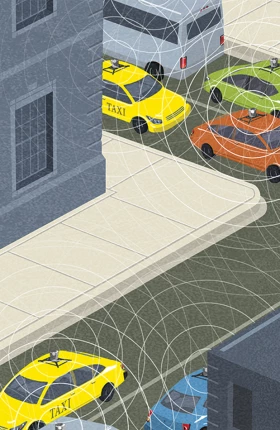Every year, more than 3.9 million people are injured in motor vehicle accidents in the US—and more than 33,000 are killed. The cost to society totals roughly $910 billion annually, according to federal estimates. Yet safety technologies on the market today could sharply reduce the number and severity of motor vehicle accidents. These innovative technologies are collectively known as advanced driver assistance systems (ADAS).
The Boston Consulting Group, in exclusive collaboration with the Motor & Equipment Manufacturers Association, has analyzed the available ADAS features and concluded that if every vehicle on the road were equipped with them—and if they were properly used and maintained—they could sharply reduce the toll that vehicle accidents take on society. Relatively few vehicles on the road today have these systems, however, and their share of the market is growing at only 2 to 5 percent annually. This is a significant missed opportunity, especially considering that ADAS technologies pave the way to partially and fully autonomous vehicles, which could reduce accidents—and their cost to society—by 90 percent or more.
ADAS features alone, if widely adopted and properly used, could generate tremendous societal benefits. BCG calculates that the cumulative safety contribution of available ADAS technologies works out to $16,307 per vehicle over a vehicle’s 20-year life. They could deliver a safety return of 98 percent, factoring in both economic savings and the avoidance of diminished quality of life.
Automotive industry stakeholders—including vehicle manufacturers, component manufacturers, dealers, regulators, legislators, insurers, rating agencies and consumer publications, industry associations, and consumers themselves—have levers within in their grasp to steer consumers toward ADAS adoption. Initiatives such as education and marketing campaigns, the inclusion of ADAS features in the criteria for five-star safety ratings, incentives for ADAS purchases, and time-limited industry mandates could increase the market penetration rate of ADAS. A rise of just 1 percent would produce an additional $4 billion in cumulative safety benefits through 2020. These and other concrete steps to promote vehicle technologies would greatly enhance the safety of the motoring public.





